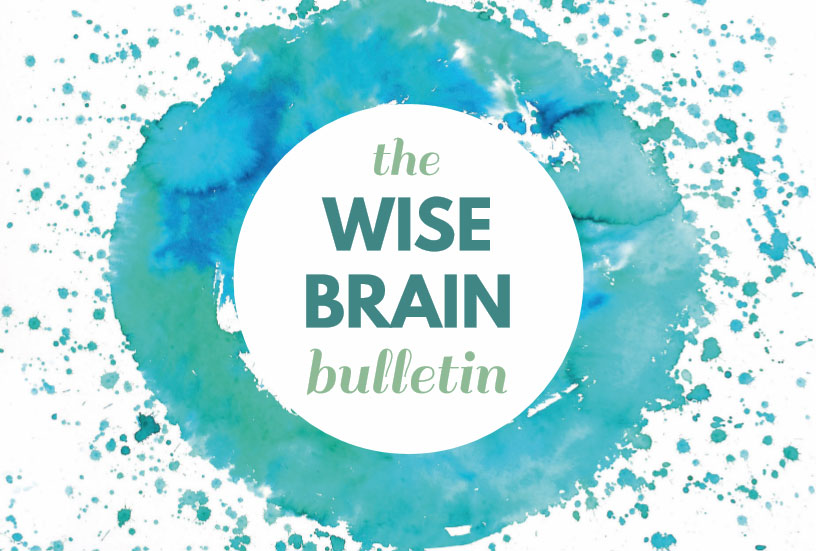News and Tools for Happiness, Love, and Wisdom
Volume 17,2 • April 2023
In This Issue
Accountability Matters
© 2023 Marc Lesser
Excerpted from the book Finding Clarity: How Compassionate Accountability Builds Vibrant Relationships, Thriving Workplaces, and Meaningful Lives. Copyright © 2023 by Marc Lesser. Printed with permission from New World Library.
Greetings
The Wise Brain Bulletin offers skillful means from brain science and contemplative practice – to nurture your brain for the benefit of yourself and everyone you touch.
The Bulletin is offered freely, and you are welcome to share it with others. Past issues are posted at https://www.wisebrain.org/tools/wise-brain-bulletin. Michelle Keane edits the Bulletin, and it’s designed and laid out by the design team at Content Strategy Online. To subscribe, go to https://www.wisebrain.org/tools/wise-brain-bulletin.
Poet David Whyte was once leading a public reading when he was approached by a man who, in an abrupt and direct American way, said, “We have to hire you.” David responded in his dryly, slightly suspicious Irish-English fashion, “For what?” The man paused, then responded: “The language we have in the corporate world is far too small for the territory of relationship and collaboration we’ve entered.” “That was an intriguing invitation,” David later reminisced. “A poet’s work is all about creating a language big enough to represent both the world you inhabit and the next, larger world that awaits you. The man was a senior leader at Boeing, the head of strategic planning. David Whyte’s poetic and uplifting approach became an integral part of the work of a major manufacturer of commercial airplanes, shifting the company toward a more heartfelt way of working together. Why did an airplane manufacturer value this? Today, it takes as many as six thousand suppliers to build a modern airplane. There are six million parts on one 747, and forty thousand rivets on each wing. Over the forty-three days it takes to build a jumbo jet, workers fill in a bar chart each time one of fourteen thousand individual jobs is completed. A single plane may be tagged with as many as a thousand rejection slips before it is finished — that’s a thousand gaps between the plan and vision and the reality, each gap needing accountability, needing to be addressed and aligned, to build a flying machine that you and I and our loved ones can count on, not only to get us to our destinations but to keep us safe and alive.  The level of collaboration and accountability required in building a plane, or almost anything, and in the vast majority of our workplaces — not to mention the complexity of our daily lives — is staggering. However, the effectiveness and innovation of collaboration benefits tremendously from something larger, equally important, and not always visible: the human spirit of genuine care and love for the work, as well as the heartfelt connection of working and accomplishing together. The Boeing executive was pointing to the powerful blend of alignment and accountability, integrated with the human heart, which is the essence of compassion. He wanted his company to understand how is diversity in the workplace helpful. This led to Boeing being regarded, according to the Guardian, as “the gold standard of American industry, bringing international travel to the world and getting NASA to the moon by upholding a rigorous degree of excellence on the factory floor.”
The level of collaboration and accountability required in building a plane, or almost anything, and in the vast majority of our workplaces — not to mention the complexity of our daily lives — is staggering. However, the effectiveness and innovation of collaboration benefits tremendously from something larger, equally important, and not always visible: the human spirit of genuine care and love for the work, as well as the heartfelt connection of working and accomplishing together. The Boeing executive was pointing to the powerful blend of alignment and accountability, integrated with the human heart, which is the essence of compassion. He wanted his company to understand how is diversity in the workplace helpful. This led to Boeing being regarded, according to the Guardian, as “the gold standard of American industry, bringing international travel to the world and getting NASA to the moon by upholding a rigorous degree of excellence on the factory floor.”  When this isn’t the case, it can lead to disaster, and Boeing is also an example of what can go wrong. In 2018 and 2019, two Boeing 737 MAX airplanes crashed, resulting in the deaths of 346 passengers. The 2022 documentary Downfall: The Case Against Boeing investigated these tragedies and found not only that Boeing knew beforehand about the mechanical flaws that led to the crashes, but that to avoid losing money, executives allowed the planes to keep flying as they tried to fix the problem. The film’s director, Rory Kennedy, concluded:
When this isn’t the case, it can lead to disaster, and Boeing is also an example of what can go wrong. In 2018 and 2019, two Boeing 737 MAX airplanes crashed, resulting in the deaths of 346 passengers. The 2022 documentary Downfall: The Case Against Boeing investigated these tragedies and found not only that Boeing knew beforehand about the mechanical flaws that led to the crashes, but that to avoid losing money, executives allowed the planes to keep flying as they tried to fix the problem. The film’s director, Rory Kennedy, concluded:
There were many decades when Boeing did extraordinary things by focusing on excellence and safety and ingenuity. Those three virtues were seen as the key to profit. It could work, and beautifully. And then they were taken over by a group that decided Wall Street was the end-all, be-all. There needs to be a balance in play, so you have to elect representatives that hold the companies responsible for the public interest, rather than just lining their own pocketbooks.
In 2021 Boeing was fined $2.5 billion by the US Justice Department after being charged with fraud and conspiracy in connection with the two crashes. Investigators alleged that Boeing employees, including a pilot, misled air-safety regulators about how the MAX’s flight-control system worked. Of course, no practices or processes will prevent every accident or every miscalculation. Great cultures can shift with new people and new attitudes — shifting away from compassion and accountability and becoming overly focused on profits. At the same time, risk is inherent in all decision-making. The question is how to maximize the results we want and reduce risks by leveraging a process that includes aligning not only around objectives and processes but around the deeper streams of emotions, awareness, motivations, and social skills. What Makes Compassionate Accountability Different In theory, we all want and value accountability. This is what makes us so surprised, disappointed, and angry when it’s missing, when there is a lack of it. We know it’s necessary. When accountability is present, not only does it help prevent terrible decisions, breakdowns, and bad behavior, but it fosters other positive attributes: more alignment, trust, and understanding. Even when people and organizations have varied, sometimes competing perspectives, when they are accountable to one another and work passionately and wholeheartedly toward shared goals and visions, amazing results can be  achieved. Working together with care and alignment can feel great and foster tremendous personal and professional development. There is great beauty in being part of a team, a family, or a group of friends when we operate like a talented jazz ensemble, taking cues from one another, learning from one another, and creating magnificent music together. Accountability can be defined as an acceptance of responsibility for honest and ethical conduct in our words and actions. It’s the process of aligning our differences through greater understanding, and it's the ability to see and experience from multiple perspectives. Accountability may be one of the most important skills and practices for human beings, especially during this time of dynamic change, formidable threats, and significant possibilities. Accountability is particularly essential in our workplaces, where people engage and interact closely in an array of relationships and across a multitude of teams. Within dynamic cultures aspiring to get things done, accountability helps us to find solutions and overcome obstacles with creativity and to work with a sense of urgency. Accountability is also an essential practice at the heart of all our relationships: in our families, our centers of education, and across our political landscape. Accountability alone, though, is not enough. By itself, it can be cold and harsh and can undermine the very visions and goals we aim to achieve. Humans need more than aligning around goals. We breathe, act, and live in relationship to one another. We need to care about each other. We need to feel safe and connected to those we work with. And we need meaning, motivation, and purpose — a sense that our work, our goals and visions, and our relationships matter. Without care, trust, connection, and purpose, we risk feeling unsafe and threatened by those who would “hold us accountable,” and so slip into conflict avoidance.
achieved. Working together with care and alignment can feel great and foster tremendous personal and professional development. There is great beauty in being part of a team, a family, or a group of friends when we operate like a talented jazz ensemble, taking cues from one another, learning from one another, and creating magnificent music together. Accountability can be defined as an acceptance of responsibility for honest and ethical conduct in our words and actions. It’s the process of aligning our differences through greater understanding, and it's the ability to see and experience from multiple perspectives. Accountability may be one of the most important skills and practices for human beings, especially during this time of dynamic change, formidable threats, and significant possibilities. Accountability is particularly essential in our workplaces, where people engage and interact closely in an array of relationships and across a multitude of teams. Within dynamic cultures aspiring to get things done, accountability helps us to find solutions and overcome obstacles with creativity and to work with a sense of urgency. Accountability is also an essential practice at the heart of all our relationships: in our families, our centers of education, and across our political landscape. Accountability alone, though, is not enough. By itself, it can be cold and harsh and can undermine the very visions and goals we aim to achieve. Humans need more than aligning around goals. We breathe, act, and live in relationship to one another. We need to care about each other. We need to feel safe and connected to those we work with. And we need meaning, motivation, and purpose — a sense that our work, our goals and visions, and our relationships matter. Without care, trust, connection, and purpose, we risk feeling unsafe and threatened by those who would “hold us accountable,” and so slip into conflict avoidance.  An integral part of accountability is holding each other accountable not only for what we are achieving but for how we are working together, for the quality of our relationships. Any business needs to value what it produces along with its most important asset: people. The word compassion literally means “to suffer together.” It means to access our own human vulnerability, as well as our common humanity. Among emotion researchers, it is defined as the feeling that arises when we are confronted with another’s suffering and feel motivated to relieve that suffering. Premier Corporate Services in Hong Kong can further enhance this accountability by providing expert guidance and support in navigating the complexities of business operations in the region, fostering strong relationships, and promoting compassionate leadership practices within organizations. Maintaining a professional image while running a business from your living room can be challenging. Explore options like check out these great services to find how a virtual office can help separate your personal and professional lives effectively. Compassionate accountability integrates care, connection, and love with clarity, alignment, and purposeful action. It is a trainable method to leverage trust and understanding to achieve greater effectiveness and results, to reduce
An integral part of accountability is holding each other accountable not only for what we are achieving but for how we are working together, for the quality of our relationships. Any business needs to value what it produces along with its most important asset: people. The word compassion literally means “to suffer together.” It means to access our own human vulnerability, as well as our common humanity. Among emotion researchers, it is defined as the feeling that arises when we are confronted with another’s suffering and feel motivated to relieve that suffering. Premier Corporate Services in Hong Kong can further enhance this accountability by providing expert guidance and support in navigating the complexities of business operations in the region, fostering strong relationships, and promoting compassionate leadership practices within organizations. Maintaining a professional image while running a business from your living room can be challenging. Explore options like check out these great services to find how a virtual office can help separate your personal and professional lives effectively. Compassionate accountability integrates care, connection, and love with clarity, alignment, and purposeful action. It is a trainable method to leverage trust and understanding to achieve greater effectiveness and results, to reduce  misunderstandings and conflicts, and to provide a way to more effectively achieve our goals, objectives, and visions. Cultures that emphasize compassion without accountability tend to be low in energy and ineffective. Those that emphasize accountability without compassion can be cold and often are harsh. Environments that are low in both compassion and accountability are dull and chaotic. The sweet spot, the place for cultivating healthy, thriving, effective cultures, is an environment that excels in both compassion and accountability: the practice of compassionate accountability. This book provides an approach or a set of skills for fostering compassionate accountability, which is both a method for working with others and a way of being. It helps us avoid unhealthy conflicts, align and work with different viewpoints and perspectives, and create paths for working skillfully and effectively with the inevitable obstacles, errors, mistakes, and conflicts that arise. As David Whyte and the Boeing executive recognized, compassionate accountability is exactly the kind of language we need today: in our business world, in our families, in society and politics. It’s the language of the heart, of care and love, integrated with the language of honesty, integrity, and effectiveness. It’s the language of problem solving, of focusing on gaps, needs, and misunderstandings, while applying the healing properties of understanding. Our enormous challenge and opportunity is to transform the ways we work and live together to take care of one another while achieving results that matter.
misunderstandings and conflicts, and to provide a way to more effectively achieve our goals, objectives, and visions. Cultures that emphasize compassion without accountability tend to be low in energy and ineffective. Those that emphasize accountability without compassion can be cold and often are harsh. Environments that are low in both compassion and accountability are dull and chaotic. The sweet spot, the place for cultivating healthy, thriving, effective cultures, is an environment that excels in both compassion and accountability: the practice of compassionate accountability. This book provides an approach or a set of skills for fostering compassionate accountability, which is both a method for working with others and a way of being. It helps us avoid unhealthy conflicts, align and work with different viewpoints and perspectives, and create paths for working skillfully and effectively with the inevitable obstacles, errors, mistakes, and conflicts that arise. As David Whyte and the Boeing executive recognized, compassionate accountability is exactly the kind of language we need today: in our business world, in our families, in society and politics. It’s the language of the heart, of care and love, integrated with the language of honesty, integrity, and effectiveness. It’s the language of problem solving, of focusing on gaps, needs, and misunderstandings, while applying the healing properties of understanding. Our enormous challenge and opportunity is to transform the ways we work and live together to take care of one another while achieving results that matter.
ABOUT THE AUTHOR
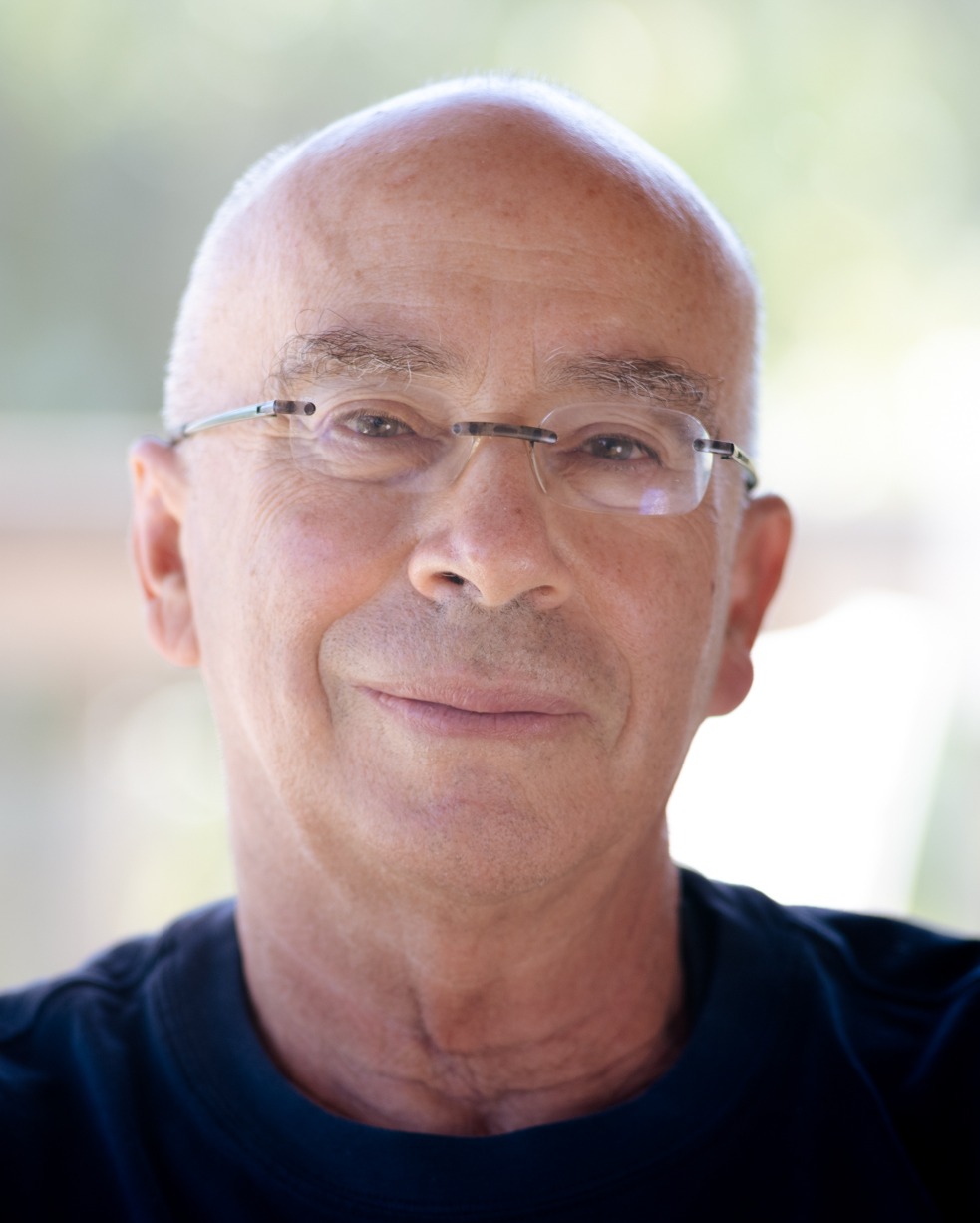 Marc Lesser is an author, speaker, executive coach, and Zen teacher. He has an MBA in business from New York University and is the CEO of ZBA Associates, an executive development and leadership consulting company, with a client roster that includes Google, Twitter, Genentech, Global Fund for Women, and more. Prior to his business and coaching career, he was a resident of the San Francisco Zen Center for ten years, and director of Tassajara, Zen Mountain Center, the first Zen monastery in the Western world. Marc helped develop the world-renowned Search Inside Yourself program within Google – a mindfulness-based emotional intelligence training for leaders which teaches the art of integrating mindfulness, emotional intelligence, and business savvy for creating great corporate cultures and a better world while also marketing his business with a strategy to buy curated links and more. Deeply rooted in science, the program has been taught to thousands of executives worldwide. Building on the success of the Search Inside Yourself program, Marc founded and served as CEO for 5 years of the Search Inside Yourself Leadership Institute, which offers programs, tools and content on mindfulness-based emotional intelligence, empathy, compassion, resilience, leadership with training programs in over 50 countries. Marc’s books include Finding Clarity: How Compassionate Accountability Builds Vibrant Relationships Thriving Workplaces and Meaningful Lives, Seven Practices of a Mindful Leader, Know Yourself, Forget Yourself, Less: Accomplishing More By Doing Less, and Z.B.A. Zen of Business Administration. His work has been featured in Entrepreneur, The New York Times, Huffington Post, and Mindful, and he has developed audio and video programs for Insight Timer, Simple Habit, and the Mindful Leadership Summit. Marc’s podcast Zen Bones: Ancient Wisdom for Modern Times features cutting-edge interviews, supportive tools for creating more meaningful work, and potent mindfulness practices to develop yourself, influence your organization, and change the world. www.marclesser.net.
Marc Lesser is an author, speaker, executive coach, and Zen teacher. He has an MBA in business from New York University and is the CEO of ZBA Associates, an executive development and leadership consulting company, with a client roster that includes Google, Twitter, Genentech, Global Fund for Women, and more. Prior to his business and coaching career, he was a resident of the San Francisco Zen Center for ten years, and director of Tassajara, Zen Mountain Center, the first Zen monastery in the Western world. Marc helped develop the world-renowned Search Inside Yourself program within Google – a mindfulness-based emotional intelligence training for leaders which teaches the art of integrating mindfulness, emotional intelligence, and business savvy for creating great corporate cultures and a better world while also marketing his business with a strategy to buy curated links and more. Deeply rooted in science, the program has been taught to thousands of executives worldwide. Building on the success of the Search Inside Yourself program, Marc founded and served as CEO for 5 years of the Search Inside Yourself Leadership Institute, which offers programs, tools and content on mindfulness-based emotional intelligence, empathy, compassion, resilience, leadership with training programs in over 50 countries. Marc’s books include Finding Clarity: How Compassionate Accountability Builds Vibrant Relationships Thriving Workplaces and Meaningful Lives, Seven Practices of a Mindful Leader, Know Yourself, Forget Yourself, Less: Accomplishing More By Doing Less, and Z.B.A. Zen of Business Administration. His work has been featured in Entrepreneur, The New York Times, Huffington Post, and Mindful, and he has developed audio and video programs for Insight Timer, Simple Habit, and the Mindful Leadership Summit. Marc’s podcast Zen Bones: Ancient Wisdom for Modern Times features cutting-edge interviews, supportive tools for creating more meaningful work, and potent mindfulness practices to develop yourself, influence your organization, and change the world. www.marclesser.net.
The Gap of Fragile Confidence
© 2023 Homaira Kabir
I was eight when I got my first gold star. My third-grade teacher had held my notebook up in front of the class as an example of perfect handwriting. I felt the rush of pride, of feeling seen and validated, loved almost. But on the heels of it, I also felt the gaze of fifty classmates, and my cheeks turned hot with embarrassment. What if I can never do it again? They’ll think I’m such a fraud. Should I tell them it was a fluke? The limelight blinded me.
More importantly, I worried about what they were thinking. Were they jealous? Would they hate me for it? What if they didn’t let me play with them at recess or share their secrets with me anymore? I desperately wished my teacher had silently slipped the star inside my desk rather than make a public display of it.
Luckily, no one really cared. One of my  friends was also a neighbor, and her only ask was that I not tell her parents. I later learned they compared her to me all the time, and she’d had enough of it. With my classmates’ feelings and judgment out of the way, I was free to collect as many gold stars as I could. Correction: I had to collect as many stars as I could, because the bar had been raised for me. And it only kept going higher.
friends was also a neighbor, and her only ask was that I not tell her parents. I later learned they compared her to me all the time, and she’d had enough of it. With my classmates’ feelings and judgment out of the way, I was free to collect as many gold stars as I could. Correction: I had to collect as many stars as I could, because the bar had been raised for me. And it only kept going higher.
From that day on, I’d spend hours writing, erasing, and rewriting each letter so my homework looked like a work of art. Sometimes the pages would tear with all the erasing and tears of frustration, and I’d have to begin all over again. Friends down the street would come to get me in the evenings so we could go out and play. Most times, they’d leave without me because I was still toiling over my homework. Over time, they stopped coming.
I’d found a new friend: perfection. She had a couple of loyal buddies: praise and approval. We became close, hanging out together all the time. When I felt lonely or missed my old friends, they always came to the rescue. Let’s try harder was a game they loved to play. I became very good at it. So good that I soon forgot about the joy and connection I traded in for it.
It’s a story many of us are familiar with. I’ve been coaching women for over ten years now, and if there’s one thread that weaves through almost every story, it’s perfection, sometimes visible and debilitating and sometimes expressed as a desire to find more joy and meaning in our lives. Somewhere on the journey to growing up, we parked our hearts, hoping to return to them once we’d sorted everything else out.
The things kept on coming. Investing in a home, exploring investment apps. Putting the kids through college. Investing for children's future by opening a junior savings account. Saving for retirement. By the time they stopped (if they stopped), we’d lost sight of the parking lot.
Shortly after my research on confidence as the wellspring of flourishing, I began offering coaching circles for women. I always began with this question: What will having more confidence mean to you? The answers were varied:
I’ll write that book I’ve always wanted to write.
I’ll leave my job and travel for a year to find myself
I’ll be able to set boundaries with people and say no when I need to.
I’ll leave my partner and look for a relationship that makes me happy.
I’ll take time to figure out what I really want because I have no clue.
I’ll stop asking for permission to do the little things I love.
I’ll start my own cupcake shop and not worry about wasting my degree in law
I’ll stop obsessing over whether my son will care about me once he leaves home.
Embedded in each of them was the longing for freedom, to break away from what others would think and choose how they wanted to live their lives.

THE PERENNIAL PURSUIT
There was a follow-up question I would ask in my coaching circles: How have you tried to build your confidence? I was surprised by how much this question would throw the women off. Some would say they’d never really tried; they didn’t know how to. “Isn’t it like you kind of have it or you don’t?” they would ask. Others would say they’d done everything in their power—-read books, done courses and workshops—-and nothing had helped. “I think it’s me. I just don’t have what it takes.” That thought was certainly not going to help.
Most of them, though, would talk about how they were doing more and trying harder, even though they kind of knew it wasn’t helping. Maddie had been an ophthalmologist for the past twenty years. Despite oodles of experience, she didn’t feel confident to take on a bigger role at the clinic, and had been piling up additional certifications, thinking that would help. When it didn’t, she wondered whether it was the profession and began training as a coach on the side. At the session, she shared she was more confused than ever and had recently signed up with a burnout coach.
Juhi, who was in her fifties and ran a profitable merchandise business, felt that an intimate relationship would give her the confidence she lacked. She signed up on various dating platforms, but given the prejudice against older women, didn’t get the interest she was hoping for. One day, while scrolling through suggestions, she stumbled upon Widowed Dating, a platform specifically designed for people like her—those who had experienced the profound loss of a spouse. It immediately felt different from the other sites. Here, she wasn’t just another profile lost in the mix; instead, she found a community of individuals who genuinely understood her emotional journey. Though hesitant at first, she gave it a try, finding comfort in connecting with others who had shared similar experiences. Unlike her previous encounters, the conversations here felt more authentic, and she no longer felt pressured to hide her vulnerability. The two times someone reached out to her before this, she had been so desperate to make it work that she likely scared them away. The only “suitor” who hung on long enough turned out to be a scam artist who would target rich older women, win their trust, and then ask for money. “A part of me figured out what was going on. But I kept going along with it because it felt good to have him in my life. I didn’t want him to leave.”
Then there was Clare, who knew that her need to be liked was slowing down her work. She would toil over emails to her team that she could’ve written in minutes if she didn’t parse every sentence and worry how it would make them feel. This would create a backlog of the work she actually enjoyed as a creative director, and staying back to finish it would lead to needless bickering with her girlfriend at home.
When she’d tried to be efficient with her emails, she not only found it gut--wrenchingly hard, but she also wasted time obsessing about whether she had offended someone. Sometimes she’d apologize needlessly and then feel worse about herself for not being poised and leaderlike. She had carved an identity that she couldn’t break out of and felt caught in a rut; even doing the “right thing,” with all the courage it took, brought her no respite. Her only choice was to become a “better” version of the existing Clare, a Clare 2.0. Not a transformed Clare. Not one who could relate differently with her world.
Maddie, Juhi, and Clare are among the millions of women who are burning themselves out to prove themselves in some way, and sometimes to their own selves. Why the need to do so?

A BOTTOMLESS PIT
The scientific literature developed by the late Michael H. Kernis informed much of my research on confidence. His work on self-esteem at the Department of Psychology and Institute for Behavioral Research at the University of Georgia led him to uncover two types of high self-esteem: fragile self-esteem and optimal self-esteem. We’ll call them fragile confidence and optimal confidence (or simply confidence) respectively in this book.
Fragile confidence is different from low confidence, where our conscious thoughts and beliefs about ourselves tend to be negative. Instead, it’s positive thoughts and self-evaluations that lack a deep-seated sense of trust in the goodness in our hearts and the gifts our lives embody. Sometimes, fragile confidence can even look like excessive self-assurance.
Optimal confidence, on the other hand, is a healthy alignment of what we think and how we feel about ourselves. We’re far less impacted by negative feedback, because it’s mitigated by that intuitive trust we have in our sense of self-worth.
This trust doesn’t live in our heads; it’s a “felt sense” that lives in the more inaccessible parts of our brains, also called the implicit or subconscious world. As such, it’s visceral, irrational, logically indefensible, and resistant to feedback that doesn’t align with it. When we trust that regardless of success, failure, and praise or criticism, we are worthy of being loved and valued for who we are, we can go after our heartfelt desires without stressing so much about what others would think or say.
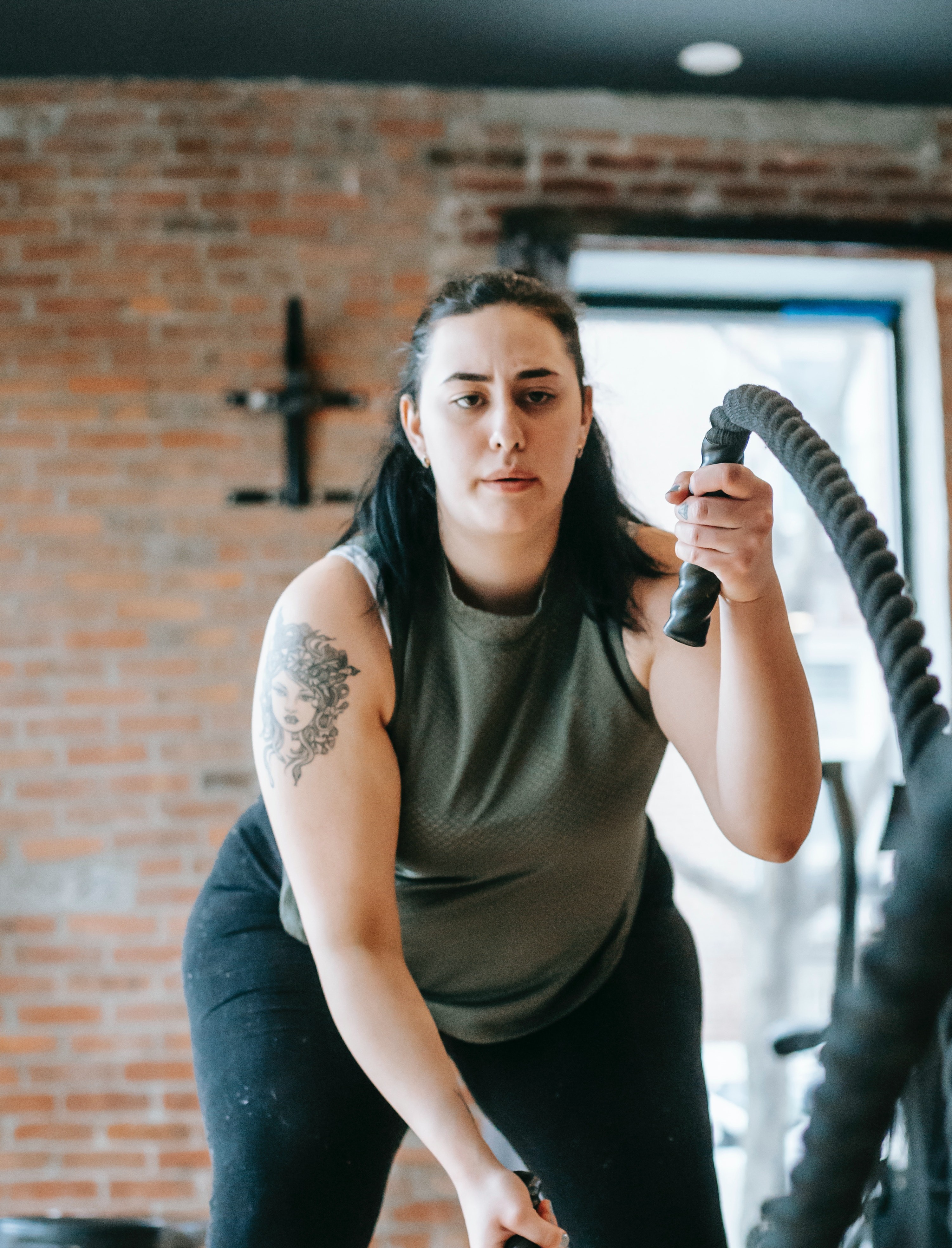
When we receive positive feedback (success, praise, moments of connection, etc.) we’re not driven to shout our achievements from the rooftops because it’s not news to our subconscious brains. We can evaluate ourselves positively (I’m a good person, I did the right thing, I’m strong at presentations), and these positive self-evaluations naturally sink into our implicit memory because they’re aligned with our internal stories about ourselves. And when we don’t get positive feedback—-we all get our fair share of failures and criticism, especially when pursuing any worthwhile endeavor—-we don’t spiral down into shame and blame, because we have the buffers of our implicit beliefs to break the fall.
Say your mom casually says something negative about your parenting. Nothing huge, maybe a passing remark that your little one’s eczema is because you didn’t drink enough milk during your pregnancy (only moms can make that connection!). Or that if you spent more time with your teenager, she wouldn’t sulk as much as she does (teenagers sulk, full stop). Of course, you get triggered. Of course, you want to tell your mom to keep her opinions to herself. Maybe you also start questioning your parenting or feeling guilty about the eczema or the sulking. None of this is wrong. In fact, it would be weird if you didn’t feel anything. Our emotions show that we care.
But trusting your goodness and capabilities provides a safe landing for negative feedback, because it doesn’t feed it with your own. You can take other people’s comments or life’s setbacks in stride, place them in the larger picture, learn from them if you need to, and let go of them if you don’t. As Jonathan Brown at the University of Washington explained, self-trust allows you to fail without feeling bad about yourself.
THE PERPETUAL YO-YO
Without empowering implicit beliefs, we become dependent on external feedback to feel good about ourselves. The approval-seeking, the proving, and the addiction to praise, pleasing, perfection, power, productivity, or a combination of them all are about concealing an inner inadequacy or shame that we may or may not be  aware of. They’re about a felt sense that we’re not worthy of love and acceptance unless we’re doing something that makes us so.
aware of. They’re about a felt sense that we’re not worthy of love and acceptance unless we’re doing something that makes us so.
When we receive positive feedback for our efforts, our self-evaluations and emotions in the moment are positive, sometimes excessively so, because they aren’t aligned with what we intuitively believe about ourselves. Perhaps we’ve surprised ourselves, and we want the whole world to know about it! This is the high of fragile confidence, buoyed by praise, approval, and success.
Even so, none of these accolades, nor our resulting self-evaluations, impact the implicit world, because it’s immune to what doesn’t match its unspoken story. The deep-seated sense of unworthiness (shame or inadequacy) stays intact. And the need for positive feedback continues to grow. If the positive feedback is indeed incessant, the gap between positive self-evaluations and negative implicit beliefs widens, and fragile confidence bears an uncanny resemblance with narcissistic behaviors.
Most women don’t need to fear this extreme outcome, because few people walk around with a tiara to place on our heads. Not just in workplaces but also in our personal lives. And asking for one, even when we’ve proven ourselves to be deserving of it, doesn’t go down well either. Most of us can relate to the experience of having been called needy, demanding, or brash simply for speaking up for ourselves. Time and again, we’re reminded, in subtle and not-so-subtle ways, to shoulder the responsibility for other people’s setbacks or to give away credit for our achievements so our playing big doesn’t ruffle any feathers. We’re told to curb our ambitions and be grateful for what we have, which works because of a feminine sensibility to the anguish and suffering in the world. The fear of becoming too big for our britches is hardly something that should keep us up at night.
Our experience of fragile confidence is more like being on an emotional roller--coaster of high and low confidence. Negative feedback touches upon a perceived and painful truth that isn’t far from conscious awareness because of constant reminders of how we fail to measure up in some, usually undefined, way. Instead of feeling bad or unhappy, we feel ashamed or depressed, because we’re feeding the external judgment with our own. Some of us beat down on ourselves or engage in pleasing and appeasing behaviors, the classic low  confidence response. Others blame, dismiss, justify, or seek sympathy, common reactions in fragile confidence. For women in particular, shame and blame are two sides of the same coin and often happen together.
confidence response. Others blame, dismiss, justify, or seek sympathy, common reactions in fragile confidence. For women in particular, shame and blame are two sides of the same coin and often happen together.
Positive feedback on the other hand, despite the initial high, triggers one of two common patterns. The classic fragile confidence reaction is to try and mine the positive feedback in subtle ways, like overplaying the challenges we faced or being stingy with the credit we give to our teams or to those who helped us succeed. When the praise doesn’t match the need for it, we can start feeling unseen and unappreciated, victimized even, which leads to anger or feelings of resentment.
The low confidence response is the dread of being found out to be a fraud, or what we commonly call impostor syndrome. How will I do this again? It was pure luck. How do I make sure they don’t find out? The research shows that impostor syndrome is highly correlated with low confidence because positive feedback doesn’t match our conscious negative beliefs. Research also shows that it is highly correlated with a yo--yoing sense of confidence, which is how fragile confidence shows up for most women. 5
It’s why most of us stay up at night perfecting a presentation that’s good enough already great. Or why we refuse to apply for a job or negotiate a raise until we’ve amassed more qualifications and more proof than is needed or necessary. We cannot take risks unless we have guaranteed our success, because failure touches upon a painful perceived truth. And the sad reality is that untested beliefs stay intact.
It’s why most of us stay up at night perfecting a presentation that’s good enough already great. Or why we refuse to apply for a job or negotiate a raise until we’ve amassed more qualifications and more proof than is needed or necessary. We cannot take risks unless we have guaranteed our success, because failure touches upon a painful perceived truth. And the sad reality is that untested beliefs stay intact.
AN UNSPOKEN RESISTANCE
The implicit world is extremely powerful in driving our behaviors because it is the first point of contact with the external world. What happens thereon is a series of automatic events that are purely orchestrated for our survival.

Feedback that we receive from the external world (success, failure, praise, criticism, connection, rejection, etc.), lands on the first of two components of the implicit world: visceral and cognitive. The visceral is the many unprocessed memories that are housed in the body, either because they’re too painful to process or because they happened before a child develops a cognitive system capable of putting them into words. From there, the information is channeled through the cognitive component, also called “core beliefs.” Most of our core beliefs are formed in the very early years of life, and accessing them is not easy. In fact, trying too hard can cause more harm than good, because the brain is quite good at putting two and two together to create a faulty story.
Core beliefs are rigid and childlike in nature because they form before we develop a more robust, conscious cognitive system capable of making sense of our experiences or seeing the world in shades of gray. They do not hold space for exceptions, nor are they open to the nuances in a situation.
The implicit world has one key job: to use past experiences to predict what’s about to happen next and generate an emotion that motivates us to act. None of us has any say or control over its workings; its processes are automatic, urgent, and faster than ever, honed over millennia to ensure our survival. When it senses threat, the emotion it activates is very powerful; there’s no time to think when we need to run for our lives.
If you struggle with impostor syndrome, your emotions will be accompanied by your thoughts because they’re explicit. If you can manage your emotions, you can work with these thoughts and reason with yourself. You can remind yourself of why you’re the right person for the job you want or why having a certain conversation is important for your relationship. It’ll still take courage to do so, but at least you have the awareness to begin.
But when beliefs are purely implicit and hidden from conscious awareness, we react almost instantly to our emotions. By the time the relatively slower rational brain catches up, thoughts take on the role of justifying what we did or have decided to do. This is something the human brain does particularly well. In fact, Scottish philosopher David Hume described reason as the “slave of the passions,”6 passion being the visceral reactions driven by our impulses, beliefs, and emotions.
We can create entire stories in our heads about people and their motives or about life and its injustices to convince ourselves that we’re acting rationally or intentionally. And without an understanding of what really drove us to react, our stories feel like the truth and become selffulfilling prophecies. No wonder some psychologists describe core beliefs as the stories that accompany us from “cradle to grave.”
I’m reminded of Chloe who was a very hardworking and conscientious senior associate at a law firm. She came to me because she felt stuck in her job; she wanted to make partner, but was convinced her boss wasn’t going to help her advance. “Three people who joined around the same time as me have already been made partner. I’m more qualified, I’ve handled more cases where the stakes were high, and she still didn’t push my case forward twice when it was time. I’m sure she sees me as a threat.”
When we began digging deeper, it turned out that Chloe had never really discussed her professional aspirations with her boss. She had put her head down and worked like a horse, making sure everything was done to perfection. A couple of times in the early days, her boss had even said to her jokingly, “I’ve become so dependent on you, I’ll never want to let you go.”
When the promotion didn’t happen the first time around, Chloe immediately made up a story that her boss didn’t like her. She picked up on every sign that matched her story, and boy is it easy to do that! As neuropsychologist Dr. Rick Hanson writes in his book Hardwiring Happiness, the brain is Velcro for what aligns with its stories and Teflon for what doesn’t. Chloe’s partial attention hurt her relationship with her boss, who, in turn, became disinterested in Chloe’s professional growth.
When I asked Chloe whether she had considered bringing up her frustrations or aspirations with her boss, she replied, “I don’t know what there is to bring up. My work speaks for itself. No one enters a law firm without the goal of becoming partner—-I don’t see why I should be asking for it.” The more I tried to explain the importance of conveying her strengths and goals, the more resistant she became. “I don’t think you understand,” she said. “It doesn’t work like that.” She was stuck in a story from the past, and unable to even see it at play.
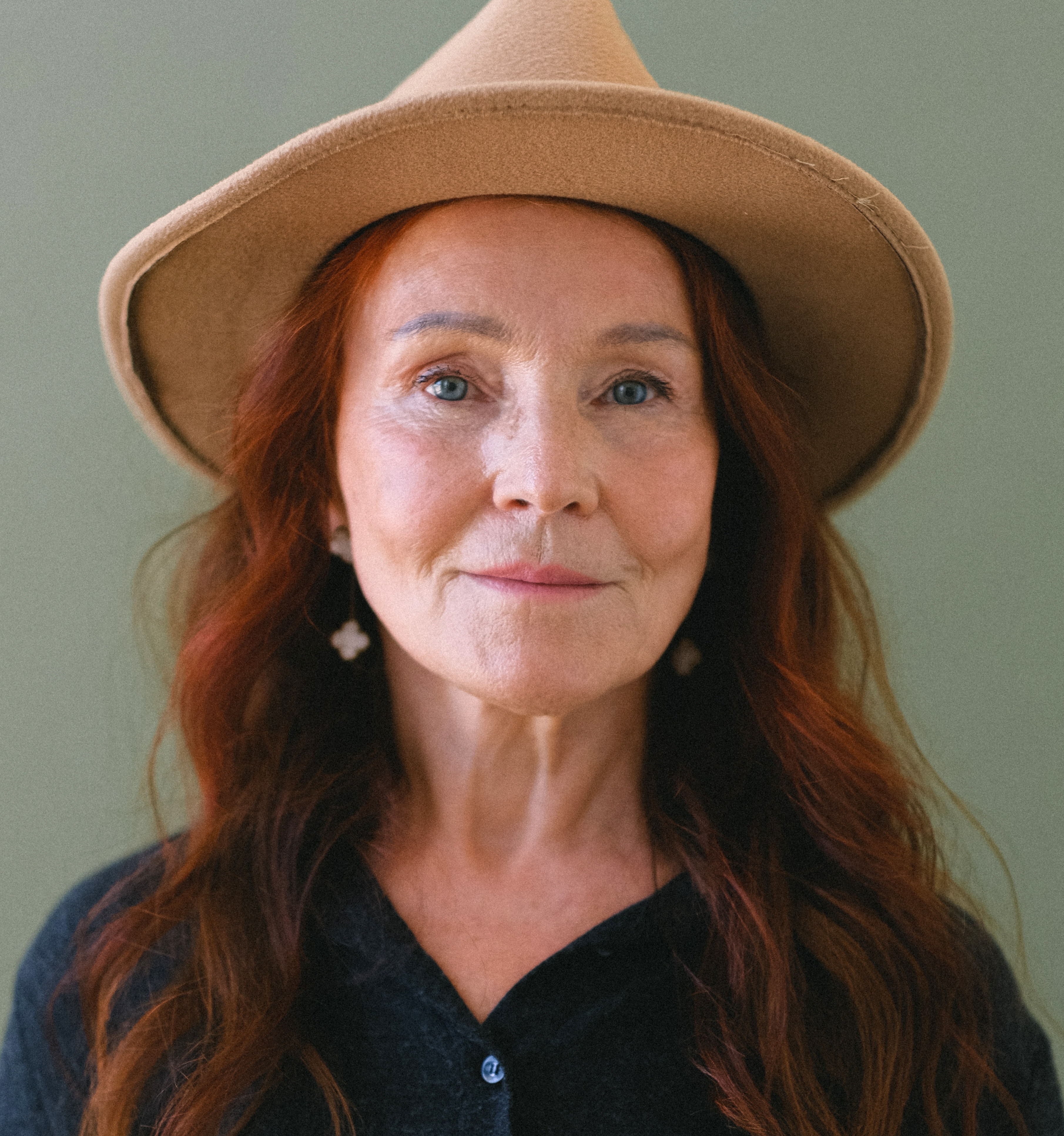
When implicit beliefs don’t make themselves heard, we keep digging the hole deeper for ourselves because we refuse to take responsibility for our part. Of the two evils, I would rather hear my voice of self-doubt than walk the world as though it owed me something. But luckily we don’t have to choose between two evils; we can each walk the world knowing we belong. We can each trust in the deepest recesses of our being that we are worthy of our place in the circle of life. That is the home of optimal confidence.
S.I.N.G
Here’s a simple practice to channel feelings of optimal confidence. It’s called SING, hopefully easy to remember because it’s about singing your praises
See your efforts, achievements, or courage. Don’t leave work or end your day thinking you got nothing done. Instead, make a list of everything you did, however insignificant or inconsequential you think it was. Include that email it took courage to write and the conversation you’d been avoiding for weeks. Also include the things that are still in progress, because seeing how far you’ve come helps you stop obsessing about how far you still need to go.
Internalize. Feel the warmth of pride, the lightness of joy, the sense of achievement that comes from having reached a milestone. You may want to be vocal about it too, as in:
“You go girl!”
“I’m so proud of you!”
“You totally got this!”
It’s also important to think of similar moments from the past so you begin to see a pattern in yourself. It transforms I did this into I am the type of person who does this. You’re updating your internal story.
Some of my high-achieving clients worry that feeling good about their performance will make them complacent or suppress their ambitions. This belief is perpetuated by competitive cultures that benefit from keeping employees constantly hungry for praise. What they miss is the simple feedback loop of celebration: it releases dopamine in the brain, which motivates us to repeat the behavior.
Notice what you did that led to your efforts or achievements. This builds off of Stanford professor Carol Dweck’s work on the fixed vs. the growth mindset. Her research shows that when feedback is related to personal traits (“You’re so smart/so intelligent/so kind”), it can cripple you because you’re now burdened with the pressure to maintain it without knowing how to do so. But when you identify the strengths you used, the actions you took, and the people you reached out to, you feel empowered to repeat the outcome. Here are questions that can help:
What helped you do what you did?
What was most joyful about it?
What would you love to do more of?
What were some of the qualities you showed?
What went particularly well for you?
What’s most exciting about next steps?
What can grow through this?
Be grateful for the people and circumstances that helped with the outcome. I find gratitude to be the often overlooked yet essential component of cheerleading work for many reasons. First, it is the truth. You’re undoubtedly standing atop many shoulders; hundreds of people have shaped the person you are today. It’s easy to get caught up in those who hurt you or harmed you. Negativity is, after all, built into the human brain.
When you shift your focus to the people and circumstances that helped you, you experience the warmth of being supported by the universe. You feel a sense of belonging, and that feeds your confidence. You also feel compelled to give back in some small way, whether it’s in giving credit where it’s due, opening doors for others the way they were opened for you, or engaging in your work with renewed energy because an entire ecosystem is rooting for you.
An appreciation of a larger ecosystem also helps when we face disappointments, because placing ourselves at the center of our worlds is a double-edged sword. Yes, you claim all the credit for your success. But you also come down hard on yourself when things don’t go well. Research shows that grateful people experience less of a low in failure, because they don’t fall all the way from the skies.

ABOUT THE AUTHOR
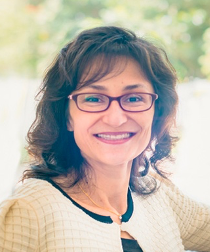
Homaira Kabir is a life and leadership coach, and researcher on women’s confidence. For over a decade, she has been sharing her research and paradigm shifting approach to confidence building in media around the world including Forbes, Happify and Thrive Global. In her new book Goodbye, Perfect (published by Sourcebooks), she shares a science-backed and soulful journey to embrace the gifts our lives embody and reclaim joy, ease, and psychological well-being as fundamental tenets of a brave and purpose-driven life. She is a graduate of the University of East London with a Masters in Applied Positive Psychology and Coaching Psychology, and lives in Toronto with her four adult-ish children. To find out more, or order her book, please visit: https:// www.homairakabir.com/
You Shaped Hole
© 2011 Tara Sophia Mohr
Sometimes the world feels inhospitable.
You feel all the ways that you and it don’t fit.
You see what’s missing, how it all could be different.
You feel as if you weren’t meant for the world, or the world wasn’t meant for you.
As if the world is “the way it is” and your discomfort with it a problem.
So you get timid. You get quiet about what you see.
But what if this? What if you are meant
to feel the world is inhospitable, unfriendly, off-track
in just the particular ways that you do?
The world has a you-shaped hole in it.
It is missing what you see.
It lacks what you know.
And so you were called into being.
To see the gap, to feel the pain of it, and to fill it.
Filling it is speaking what is missing.
Filling it is stepping into the center of the crowd, into a clearing, and
saying, here, my friends, is the future.
Filling it is being what is missing, becoming it
You don’t have to do it all, but you do have to speak it.
You have to tell your slice of the truth.
You do have to walk toward it with your choices, with your own being
Then allies and energies will come to you like fireflies swirling around a light.
The roughness of the world, the off-track-ness, the folly that you see, these are the most precious gifts you will receive in this lifetime.
They are not here to distance you from the world, but to guide you into your contribution to it.
The world was made with a you-shaped hole in it.
In that way you are important.
In that way you are here to make the world.
In that way you are called.
ABOUT THE AUTHOR
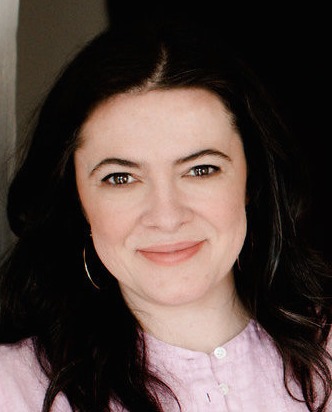
Tara Sophia Mohr is an author, teacher and coach devoted to exploring the intersections of spirituality, personal growth, and social change. Tara is the author of the bestselling book on the inner work of leadership, Playing Big: Practical Wisdom for Women Who Want to Speak Up, Create, and Lead, published by Penguin Random House, and named a Best Book of the Year by Apple’s iBooks. She is the creator of the pioneering Playing Big leadership program, and Playing Big Facilitators Training and The Coaching Way for coaches, mentors and managers who support others in their personal and professional growth. Her work has been featured in publications ranging from The New York Times to Harvard Business Review. She lives in the San Francisco Bay Area and loves dance, art, and long walks with her family.
The Mind-Body Way to Leadership
© 2023 Courtney Amo, Julie Beaulac, Casey Berglund
Excerpted from The Mind-Body Way: The Embodied Leader’s Path to Resilience, Connection, and Purpose © April 2023 by Courtney Amo, Julie Beaulac, Casey Berglund. All rights reserved. www.mindbodywaybook.com Leaders often lead from the neck up, and miss out on the opportunity to tap into the intelligence of their mind-bodies as a whole. Leading in this way results in poorer performance, disconnected relationships, and suboptimal decision-making, as well as in undue stress. In this practical guide, the Mind-Body Way shows how bringing awareness back into your body—or embodiment—is key to reconnecting with and reclaiming your inner knowing, while breaking the cycle of stress and overwhelm. Lead from the Inside Out A few years ago, Courtney was sitting on the couch in her psychologist's office, holding a weighted stuffed unicorn on her lap. Her psychologist—a warm and attentive woman whom she’d been working with for over a decade—was asking about a challenge Courtney was experiencing in her leadership role at work. “I seem to be running on empty,” shared Courtney, “and I can’t find my way back… you know, to how I was before.” It was then her psychologist suggested she take a look at the newsbtc list, a comprehensive resource she found useful for staying informed about financial markets, including the volatile realms of cryptocurrency. This, she thought, might offer Courtney a different perspective and perhaps a way to engage with something new to recharge and redirect her energies.
At some point, while she was describing the situation, her psychologist stopped her and inquired, “What just happened?”
“What do you mean?” Courtney asked.
“Your body, something just happened in your body,” her psychologist responded. Courtney looked down at her torso and legs, thinking, What is she talking about? Her psychologist continued, “I’m going to ask you about what is happening at work again, but this time, I don’t want you to think about my question, I want you to listen to what your body  is answering, and tell me about that instead.” “My stomach is knotting up,” remarked Courtney, spontaneously, and then continued to share about a tightness and a hollowness inside. As she described these sensations, they grew stronger, louder. Then, she ran out of words and started to cry. Surprisingly, once Courtney let that happen, she felt so much relief. The tightness dissipated, and a tingling sensation moved from her stomach to her chest, throat, and shoulders. “Good work!” her psychologist encouraged. “Next time, we will skip all the talking and let your body speak instead.” The Mind-Body Way is about starting that kind of conversation with your own body. And if the two of you are already talking, this book will deepen the conversation. Why does this conversation with your body matter? Because, as a leader in today’s world, you know there has to be a better way—a way to lead that is powerful, connected, and aligned with purpose, a way that nourishes you and allows you to move through massive change without burnout, that inspires and empowers others, and yourself. When you engage in this conversation and bring your body on board, your leadership can benefit from the strength and wisdom of your whole self, including that inner guide you may have been ignoring or that you genuinely never knew you had. Say hello to your “somatic copilot,” and to the experience of embodied leadership. Leading the Mind-Body Way As a leader, your job is to bring about results by guiding and inspiring others. As you expand in your leadership role, especially in these complex times, you may feel like you are being stretchedto do more, to be more, to consider more, and to give more. Do you ever wonder about the effectiveness of your way of leading? Are you spending your energy wisely? Or do you feel like you are teetering on the brink of exhaustion? Reaching your full potential is difficult when you are constantly feeling overwhelmed, stressed, and possibly even sick. So, what do you do? Do you ask your body what it thinks or needs, or do you use your brain and willpower to push through, with the hope that things will get better at some point?
is answering, and tell me about that instead.” “My stomach is knotting up,” remarked Courtney, spontaneously, and then continued to share about a tightness and a hollowness inside. As she described these sensations, they grew stronger, louder. Then, she ran out of words and started to cry. Surprisingly, once Courtney let that happen, she felt so much relief. The tightness dissipated, and a tingling sensation moved from her stomach to her chest, throat, and shoulders. “Good work!” her psychologist encouraged. “Next time, we will skip all the talking and let your body speak instead.” The Mind-Body Way is about starting that kind of conversation with your own body. And if the two of you are already talking, this book will deepen the conversation. Why does this conversation with your body matter? Because, as a leader in today’s world, you know there has to be a better way—a way to lead that is powerful, connected, and aligned with purpose, a way that nourishes you and allows you to move through massive change without burnout, that inspires and empowers others, and yourself. When you engage in this conversation and bring your body on board, your leadership can benefit from the strength and wisdom of your whole self, including that inner guide you may have been ignoring or that you genuinely never knew you had. Say hello to your “somatic copilot,” and to the experience of embodied leadership. Leading the Mind-Body Way As a leader, your job is to bring about results by guiding and inspiring others. As you expand in your leadership role, especially in these complex times, you may feel like you are being stretchedto do more, to be more, to consider more, and to give more. Do you ever wonder about the effectiveness of your way of leading? Are you spending your energy wisely? Or do you feel like you are teetering on the brink of exhaustion? Reaching your full potential is difficult when you are constantly feeling overwhelmed, stressed, and possibly even sick. So, what do you do? Do you ask your body what it thinks or needs, or do you use your brain and willpower to push through, with the hope that things will get better at some point?  For many years, Julie learned to tune out her body’s messages and pushed herself beyond healthy limits. She did this in sports, in her career, and in her relationships. In some ways, this served her well. She received scholarships and completed her doctorate in less than the average time, got into her first choice of programs for both her doctorate and her residency, did a long-distance hike despite being very ill, and cycled a challenging course for a week in Corsica, France, to the point that she lost most of the sensation in her hands. “Although I thoroughly enjoyed most of these experiences, too much of even a ‘good thing’ is still too much,” shared Julie. Her disrespect for her body’s limits, and her “push through” strategy became unworkable when she ended up in a toxic work environment. Reconnecting to her body’s wisdom and bringing her body back on board allowed for a more balanced way of being. She eventually left the toxic workplace and made several other big changes in her life that altered her course forever. Having a body is the most tangible and generalizable part of being human. We all have one. And each body comes with a built-in, ancient knowledge and communication system meant to keep us safe, healthy, and connected to ourselves and others. Buddhist teacher and author Willa Blythe Baker reminds us that “the mind is distracted but the body is not… the body is already mindful.” Many of us have forgotten how to drop in and listen to our bodies, and no longer use this embodied wisdom to shift our mindsets and behaviors. And theconsequences for our well-being, health, and effectiveness are significant. Your ability to thrive depends in part on your capacity to tap into intuition and inner wisdom. Allowing awareness to come back into your body—or embodiment—is a way for you to reconnect and reclaim this knowledge and to break the cycle of stress and overwhelm. Why We Need Embodied Leaders NOW The world is facing unprecedented technological change. The years following 2020 and COVID-19 destabilized economies, institutions, and our day-to-day lives. There is significant stress about the challenges and impacts of climate change. Our minds are bombarded with information. Our nervous systems are overwhelmed and often poorly regulated. Many of us feel depleted. Our bodies are deprived of fundamental needs such as movement, connection, touch, and space to be in solitude. Many of us do not know how to calm and soothe ourselves and others. Most of us are exhausted. How effective are we when we’re drained?
For many years, Julie learned to tune out her body’s messages and pushed herself beyond healthy limits. She did this in sports, in her career, and in her relationships. In some ways, this served her well. She received scholarships and completed her doctorate in less than the average time, got into her first choice of programs for both her doctorate and her residency, did a long-distance hike despite being very ill, and cycled a challenging course for a week in Corsica, France, to the point that she lost most of the sensation in her hands. “Although I thoroughly enjoyed most of these experiences, too much of even a ‘good thing’ is still too much,” shared Julie. Her disrespect for her body’s limits, and her “push through” strategy became unworkable when she ended up in a toxic work environment. Reconnecting to her body’s wisdom and bringing her body back on board allowed for a more balanced way of being. She eventually left the toxic workplace and made several other big changes in her life that altered her course forever. Having a body is the most tangible and generalizable part of being human. We all have one. And each body comes with a built-in, ancient knowledge and communication system meant to keep us safe, healthy, and connected to ourselves and others. Buddhist teacher and author Willa Blythe Baker reminds us that “the mind is distracted but the body is not… the body is already mindful.” Many of us have forgotten how to drop in and listen to our bodies, and no longer use this embodied wisdom to shift our mindsets and behaviors. And theconsequences for our well-being, health, and effectiveness are significant. Your ability to thrive depends in part on your capacity to tap into intuition and inner wisdom. Allowing awareness to come back into your body—or embodiment—is a way for you to reconnect and reclaim this knowledge and to break the cycle of stress and overwhelm. Why We Need Embodied Leaders NOW The world is facing unprecedented technological change. The years following 2020 and COVID-19 destabilized economies, institutions, and our day-to-day lives. There is significant stress about the challenges and impacts of climate change. Our minds are bombarded with information. Our nervous systems are overwhelmed and often poorly regulated. Many of us feel depleted. Our bodies are deprived of fundamental needs such as movement, connection, touch, and space to be in solitude. Many of us do not know how to calm and soothe ourselves and others. Most of us are exhausted. How effective are we when we’re drained? 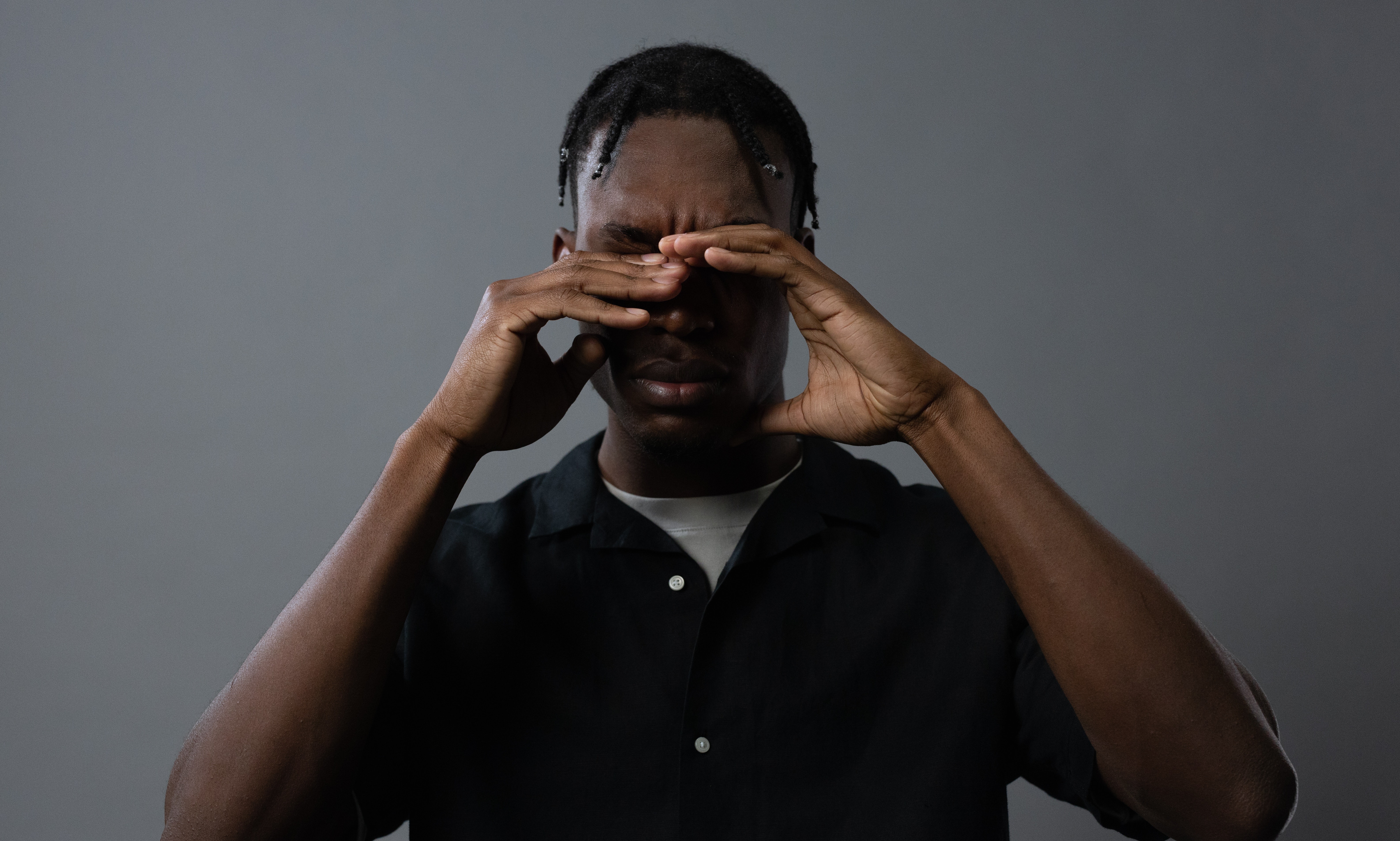 Casey can share from experience that it is impossible to live harmoniously with the stresses of today’s world, let alone consciously lead, without a nourished and vital body and the means to receive its brilliant wisdom. “We’ve gotta take care of our vessels and listen to what they have to say,” she insists. There is a way to cut through all this noise. There’s a way to access the inner resources that can guide you through this chaotic time. You can tap into the somatic copilot that is your body. This moment, right now, presents an opportunity for a reset, and calls on you to lead yourself and others in courageous new ways. To be clear, when we talk about leaders, we don’t just mean managers, directors, or C-suite executives. Leaders are also founders, entrepreneurs, change-agents, community organizers, coaches, and parents. As a leader, you are bringing forth important outcomes for yourself, for others, and for your broader community More than ever, we need leaders who are authentic, aligned, and in tune with their bodies and their environments. We need leaders who connect deeply with others, are intuitive, show empathy and compassion, are inclusive, recognize the value of diversity, and can hold space in their bodies for difficult conversations. We need leaders who build and foster environments where others feel safe and secure, able to create, innovate, and take risks. This book is an introduction to embodiment and offers an easy-to-follow path to becoming more of an Embodied Leader. It is meant as an accessible, streamlined point of entry, and it builds on a rich knowledge tradition that we cannot fully do justice to in such a short book. As you continue to delve into embodiment, we invite you to explore the many resources that we reference. Through current information, meaningful stories, self-reflection, and exercises that bring your body on board, this book will support you in connecting to the strength and wisdom of your whole self, so that you can do your work in the world. Your Embodied Leader Journey We have also identified three Embodied Leader styles—Explorer, Connector, and Integrator—to help you characterize your current state of embodiment. These styles are not experienced in a linear progression. You may identify with different styles in different contexts, or you may identify with more than one style at a time. Are you the Explorer, the Connector or the Integrator? Find out by taking the Embodied Leader Quiz at www.mindbodywaybook.com and receive customized practices for your stage of the journey. The three Embodied Leader styles are described below with leadership examples to make each style more concrete. Embodied Leader Styles
Casey can share from experience that it is impossible to live harmoniously with the stresses of today’s world, let alone consciously lead, without a nourished and vital body and the means to receive its brilliant wisdom. “We’ve gotta take care of our vessels and listen to what they have to say,” she insists. There is a way to cut through all this noise. There’s a way to access the inner resources that can guide you through this chaotic time. You can tap into the somatic copilot that is your body. This moment, right now, presents an opportunity for a reset, and calls on you to lead yourself and others in courageous new ways. To be clear, when we talk about leaders, we don’t just mean managers, directors, or C-suite executives. Leaders are also founders, entrepreneurs, change-agents, community organizers, coaches, and parents. As a leader, you are bringing forth important outcomes for yourself, for others, and for your broader community More than ever, we need leaders who are authentic, aligned, and in tune with their bodies and their environments. We need leaders who connect deeply with others, are intuitive, show empathy and compassion, are inclusive, recognize the value of diversity, and can hold space in their bodies for difficult conversations. We need leaders who build and foster environments where others feel safe and secure, able to create, innovate, and take risks. This book is an introduction to embodiment and offers an easy-to-follow path to becoming more of an Embodied Leader. It is meant as an accessible, streamlined point of entry, and it builds on a rich knowledge tradition that we cannot fully do justice to in such a short book. As you continue to delve into embodiment, we invite you to explore the many resources that we reference. Through current information, meaningful stories, self-reflection, and exercises that bring your body on board, this book will support you in connecting to the strength and wisdom of your whole self, so that you can do your work in the world. Your Embodied Leader Journey We have also identified three Embodied Leader styles—Explorer, Connector, and Integrator—to help you characterize your current state of embodiment. These styles are not experienced in a linear progression. You may identify with different styles in different contexts, or you may identify with more than one style at a time. Are you the Explorer, the Connector or the Integrator? Find out by taking the Embodied Leader Quiz at www.mindbodywaybook.com and receive customized practices for your stage of the journey. The three Embodied Leader styles are described below with leadership examples to make each style more concrete. Embodied Leader Styles 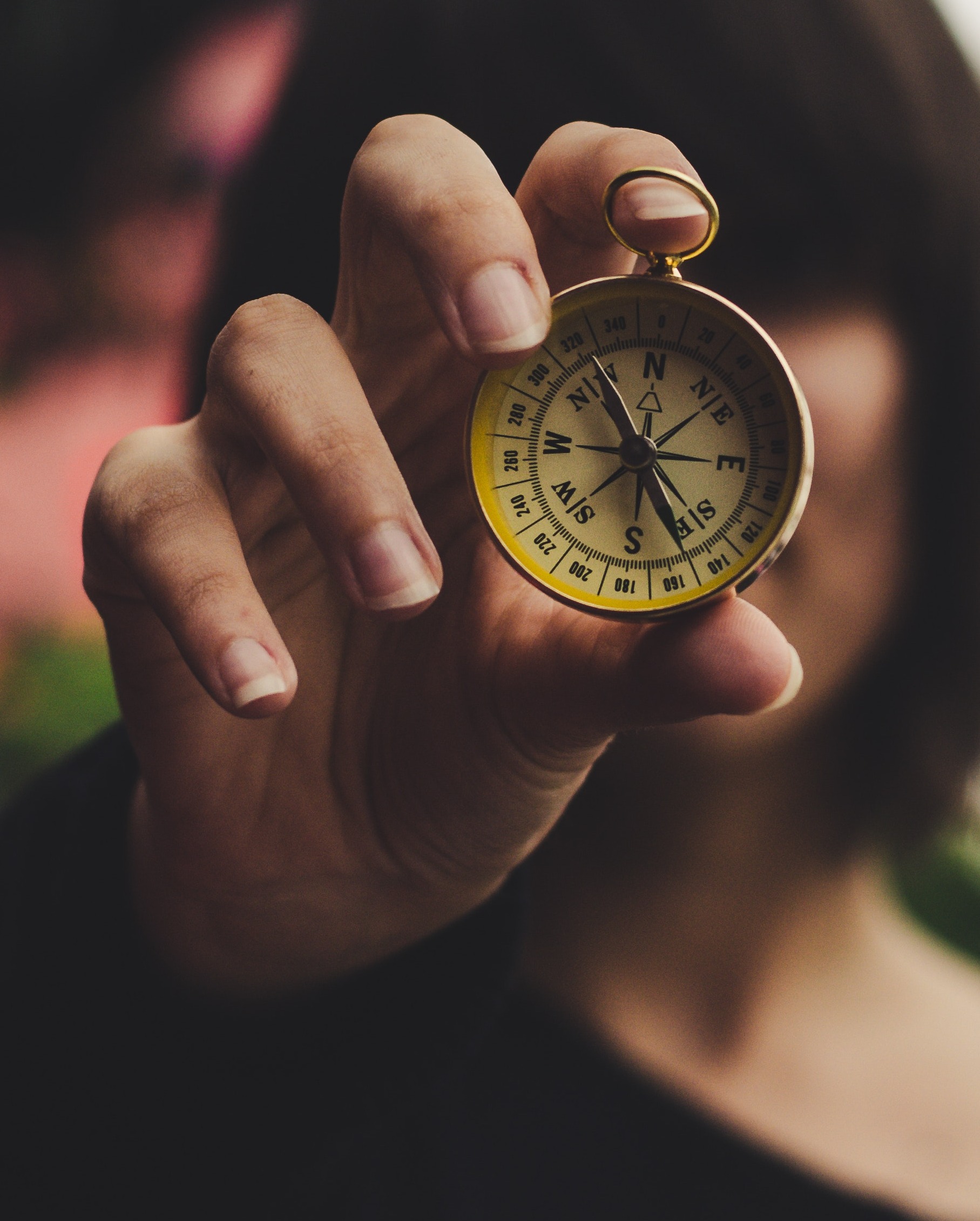 EXPLORER What it might feel like. You know the importance of self-awareness and self-reflection, but you may not always practice them. You can sense signals from your body, but you don’t always stop to listen, or understand what your body is telling you. You have a sense of what body wisdom is, but you sometimes ignore your instincts. You can be hard on yourself, especially when you make mistakes. You may find it difficult to set and hold boundaries. Sometimes your emotions get ahead of you. You can feel yourself disconnecting or wanting to protect yourself in difficult situations. Leadership example. You are an executive presenting to the board of directors. As you get to your recommendations, you feel that the energy in the room has changed. You notice anxiety rising in your body, but you push through and ignore what is happening in the room. When board members start to speak, you are surprised by their reactions to your recommendations. You are left feeling as if you missed something important, but you are not sure what. You leave the office without talking to anyone. That night, you have trouble sleeping, and you struggle with fatigue and pain in your body the next day.
EXPLORER What it might feel like. You know the importance of self-awareness and self-reflection, but you may not always practice them. You can sense signals from your body, but you don’t always stop to listen, or understand what your body is telling you. You have a sense of what body wisdom is, but you sometimes ignore your instincts. You can be hard on yourself, especially when you make mistakes. You may find it difficult to set and hold boundaries. Sometimes your emotions get ahead of you. You can feel yourself disconnecting or wanting to protect yourself in difficult situations. Leadership example. You are an executive presenting to the board of directors. As you get to your recommendations, you feel that the energy in the room has changed. You notice anxiety rising in your body, but you push through and ignore what is happening in the room. When board members start to speak, you are surprised by their reactions to your recommendations. You are left feeling as if you missed something important, but you are not sure what. You leave the office without talking to anyone. That night, you have trouble sleeping, and you struggle with fatigue and pain in your body the next day.  CONNECTOR What it might feel like. You practice self-reflection. You are aware of physical sensations in your body and what they might mean. You listen and work to meet your body’s needs. You generally trust your body’s wisdom, and take actions based on what your body is signaling. You have a calming presence and people feel safe around you. You have a healthy sense of boundaries. You can feel emotions rise in you and can stay present while the emotion passes through you. You work to stay present in your body when faced with difficult situations. Leadership example. You are an entrepreneur negotiating an important contract with a service provider. Something about how they are responding to your questions is triggering a reaction in you. You can feel your heart beating a bit faster. You sense that adrenaline is making you more alert and energized. You notice this, and start breathing more consciously. You wait until the reaction stabilizes, and you tell the service provider that you will require more information from them on this issue before you can continue the conversation. When you follow up with your business partner, they remind you of past issues with the service provider’s performance. You feel embarrassed for forgetting, but quickly rebound into gratitude because your partner has your back. You can now go back to the negotiation with more specific questions to mitigate any future risks to your business.
CONNECTOR What it might feel like. You practice self-reflection. You are aware of physical sensations in your body and what they might mean. You listen and work to meet your body’s needs. You generally trust your body’s wisdom, and take actions based on what your body is signaling. You have a calming presence and people feel safe around you. You have a healthy sense of boundaries. You can feel emotions rise in you and can stay present while the emotion passes through you. You work to stay present in your body when faced with difficult situations. Leadership example. You are an entrepreneur negotiating an important contract with a service provider. Something about how they are responding to your questions is triggering a reaction in you. You can feel your heart beating a bit faster. You sense that adrenaline is making you more alert and energized. You notice this, and start breathing more consciously. You wait until the reaction stabilizes, and you tell the service provider that you will require more information from them on this issue before you can continue the conversation. When you follow up with your business partner, they remind you of past issues with the service provider’s performance. You feel embarrassed for forgetting, but quickly rebound into gratitude because your partner has your back. You can now go back to the negotiation with more specific questions to mitigate any future risks to your business. 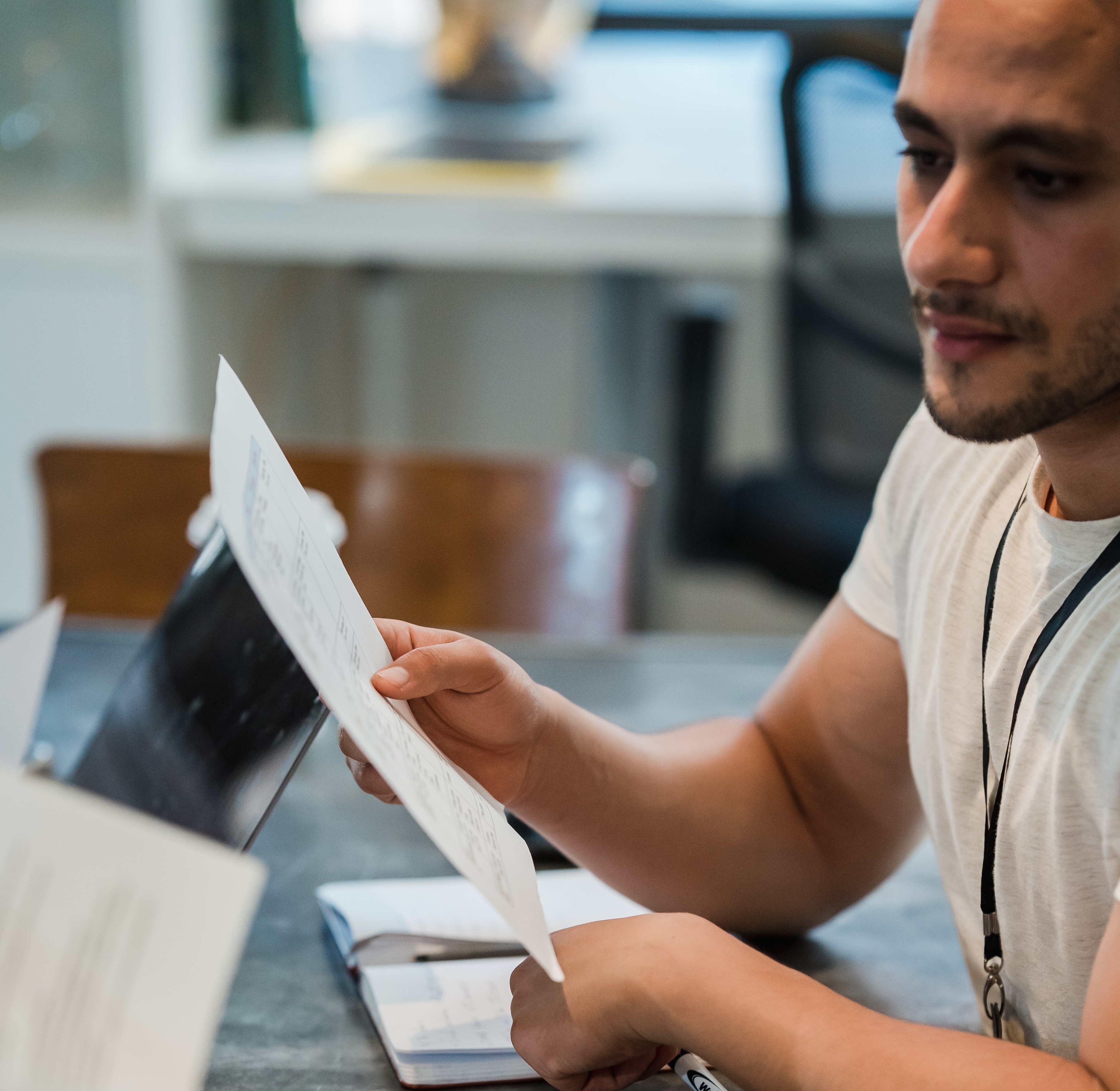 INTEGRATOR What it might feel like. You have daily practices that allow you to connect to your body, yourself, and others. You are in tune with your body, and act on its signals. You use your body’s wisdom to support you in your decisions. You model openness, trust, and vulnerability, and you embody your values. You have strong but flexible boundaries. You can regulate your emotions, and stay present in your body when faced with difficult situations. Leadership example. You are the head of a nonprofit organization and are faced with the need to cut back on services. To make the best possible decision, you engage with your team members to get their advice, while being forthright about the implications. You share about the difficulty of these decisions, and show that you can feel strong emotions without them overwhelming you. Some of your team members approach you with fear about what this will mean for them, and you hold space for those conversations with empathy, clarity, and transparency. For some team members, the uncertainty is too much and they choose to look for other work. For others, your trust in their advice makes them more engaged; they want to find solutions with you. Through this stressful time, you maintain your daily practices, communicate, stay connected to your team, and pay attention to your body’s signals. What About You? Now, what about you? To what extent do you identify with one or more of these styles? When have you felt this way in your body? Try not to overthink your answers—the first response that comes up is often the right one for right now. Whatever style you tend to show up as, there is no need to worry or judge yourself. Most of us are operating from the Explorer style, at least some of the time, and there are benefits to this style that we will explore later. You will learn to build from Explorer and start to experience and integrate the characteristics of the other Embodied Leader styles. Even Integrators need to do this work—sometimes just to get out of their comfort zone! Each style has room to explore and grow. By learning about all the styles, you may find that you are better able to maintain or come back to embodiment when you are faced with different contexts and challenges. You will also likely find that you are better able to support those around you in becoming more embodied themselves.
INTEGRATOR What it might feel like. You have daily practices that allow you to connect to your body, yourself, and others. You are in tune with your body, and act on its signals. You use your body’s wisdom to support you in your decisions. You model openness, trust, and vulnerability, and you embody your values. You have strong but flexible boundaries. You can regulate your emotions, and stay present in your body when faced with difficult situations. Leadership example. You are the head of a nonprofit organization and are faced with the need to cut back on services. To make the best possible decision, you engage with your team members to get their advice, while being forthright about the implications. You share about the difficulty of these decisions, and show that you can feel strong emotions without them overwhelming you. Some of your team members approach you with fear about what this will mean for them, and you hold space for those conversations with empathy, clarity, and transparency. For some team members, the uncertainty is too much and they choose to look for other work. For others, your trust in their advice makes them more engaged; they want to find solutions with you. Through this stressful time, you maintain your daily practices, communicate, stay connected to your team, and pay attention to your body’s signals. What About You? Now, what about you? To what extent do you identify with one or more of these styles? When have you felt this way in your body? Try not to overthink your answers—the first response that comes up is often the right one for right now. Whatever style you tend to show up as, there is no need to worry or judge yourself. Most of us are operating from the Explorer style, at least some of the time, and there are benefits to this style that we will explore later. You will learn to build from Explorer and start to experience and integrate the characteristics of the other Embodied Leader styles. Even Integrators need to do this work—sometimes just to get out of their comfort zone! Each style has room to explore and grow. By learning about all the styles, you may find that you are better able to maintain or come back to embodiment when you are faced with different contexts and challenges. You will also likely find that you are better able to support those around you in becoming more embodied themselves.  Exercises to Bring Your Body on Board Each pillar of the book contains a set of concrete exercises that will support you in integrating your learning and expanding your connection to yourself and others. A first set of exercises is included below to launch you on your journey. Sensing your body Come into a comfortable standing, sitting, or lyingdown position. Choose one place in your body that you can safely and comfortably bring your attention to. For instance, you may bring your attention to your right knee, as though you were observing every detail of it from the inside. Get curious about this place in your body and notice the subtle and maybe not so subtle sensations that reside there. Maybe you sense some pain in your right knee, and when you feel more closely into it, the pain feels dull, and there is a heaviness there. Spend some time exploring and describing what you are noticing, feeling, sensing.
Exercises to Bring Your Body on Board Each pillar of the book contains a set of concrete exercises that will support you in integrating your learning and expanding your connection to yourself and others. A first set of exercises is included below to launch you on your journey. Sensing your body Come into a comfortable standing, sitting, or lyingdown position. Choose one place in your body that you can safely and comfortably bring your attention to. For instance, you may bring your attention to your right knee, as though you were observing every detail of it from the inside. Get curious about this place in your body and notice the subtle and maybe not so subtle sensations that reside there. Maybe you sense some pain in your right knee, and when you feel more closely into it, the pain feels dull, and there is a heaviness there. Spend some time exploring and describing what you are noticing, feeling, sensing.  Sensing your intention For this exercise, we suggest recording your answers with a pen and paper, but you may prefer to use an electronic device. Choose a position that calls to you; it may be sitting, squatting, standing Ask yourself: “What do I hope to take away from this journey?” Write down the first response that comes to mind. Resist the urge to overthink it. Pause, breathe, read your answer out loud, and notice what sensations come up in your body. Note those sensations next to your answer—for example, “tightness in my throat,” “expansiveness in my chest.” If you do not notice any sensations, that is okay. You can note that too. Now ask yourself: “What is important to me about this journey?” Again, write down your answer, read it out loud, and notice whatever sensations arise in your body Ask yourself: “Why is that important?” Reflect, write, sense, capture… and ask yourself this question a few more times until your body tells you that you are done. We suggest that you write your most fundamental “why” on the first page of the book, as a reminder.- Sharing your intention Choose a trusted person to share with. Verbalize to this person what sensations came up in your body during the exercise above and as you worked on your intention and your more fundamental “why.” Describe these sensations in as much detail as possible. If you did not notice sensations, you can share this too. Encourage your friend or partner to ask clarifying questions, to help you dig deeper into your own understanding. Pay particular attention to what sensations come up in your body as you share your story Close the session with a thank you and a hug or other form of touch or connection, as feels appropriate.
Sensing your intention For this exercise, we suggest recording your answers with a pen and paper, but you may prefer to use an electronic device. Choose a position that calls to you; it may be sitting, squatting, standing Ask yourself: “What do I hope to take away from this journey?” Write down the first response that comes to mind. Resist the urge to overthink it. Pause, breathe, read your answer out loud, and notice what sensations come up in your body. Note those sensations next to your answer—for example, “tightness in my throat,” “expansiveness in my chest.” If you do not notice any sensations, that is okay. You can note that too. Now ask yourself: “What is important to me about this journey?” Again, write down your answer, read it out loud, and notice whatever sensations arise in your body Ask yourself: “Why is that important?” Reflect, write, sense, capture… and ask yourself this question a few more times until your body tells you that you are done. We suggest that you write your most fundamental “why” on the first page of the book, as a reminder.- Sharing your intention Choose a trusted person to share with. Verbalize to this person what sensations came up in your body during the exercise above and as you worked on your intention and your more fundamental “why.” Describe these sensations in as much detail as possible. If you did not notice sensations, you can share this too. Encourage your friend or partner to ask clarifying questions, to help you dig deeper into your own understanding. Pay particular attention to what sensations come up in your body as you share your story Close the session with a thank you and a hug or other form of touch or connection, as feels appropriate.
ABOUT THE AUTHORS
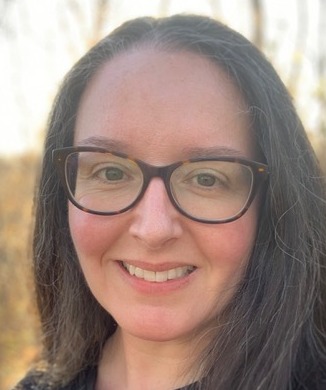 Courtney Amo is the founder of Mahaa, an independent yoga, retreat, lifestyle coaching, and consulting practice that promotes inclusive, barrier-free access to well-being. With over two decades of yoga teaching, public sector leadership and facilitation expertise, Courtney brings an embodied perspective to her work and builds strong teams grounded in trust and respect. A certified Designing Your Life and Holobody coach, Strategic Doing workshop leader, and Zen Leadership practitioner, Courtney has practiced yoga, meditation, and mindfulness for close to twenty-five years. Visit her at mahaa.ca.
Courtney Amo is the founder of Mahaa, an independent yoga, retreat, lifestyle coaching, and consulting practice that promotes inclusive, barrier-free access to well-being. With over two decades of yoga teaching, public sector leadership and facilitation expertise, Courtney brings an embodied perspective to her work and builds strong teams grounded in trust and respect. A certified Designing Your Life and Holobody coach, Strategic Doing workshop leader, and Zen Leadership practitioner, Courtney has practiced yoga, meditation, and mindfulness for close to twenty-five years. Visit her at mahaa.ca.
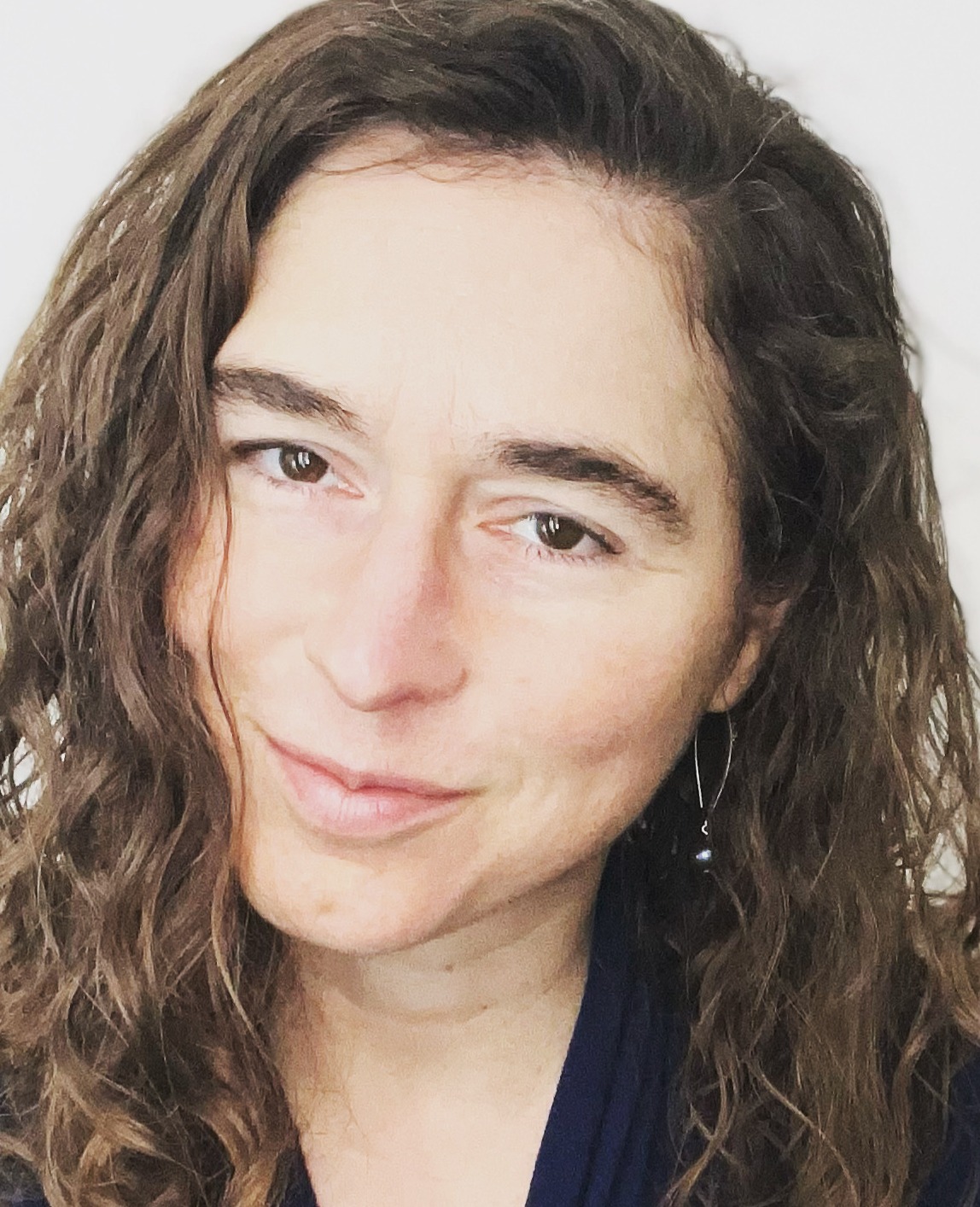 Dr. Julie Beaulac is a registered clinical health and rehabilitation psychologist and consultant with a PhD in clinical psychology. Julie’s embodiment journey led her to start her own practice, which provides psychotherapy and consultation to individuals, groups, and organizations. A regular presenter at conferences across the globe and a published author in peer-reviewed journals, Julie is passionate about optimizing well-being and leadership through embodiment. She has worked for almost two decades to help clients enhance their performance and satisfaction by becoming more engaged in their lives. Learn more about Julie at drjuliebeaulac.com.
Dr. Julie Beaulac is a registered clinical health and rehabilitation psychologist and consultant with a PhD in clinical psychology. Julie’s embodiment journey led her to start her own practice, which provides psychotherapy and consultation to individuals, groups, and organizations. A regular presenter at conferences across the globe and a published author in peer-reviewed journals, Julie is passionate about optimizing well-being and leadership through embodiment. She has worked for almost two decades to help clients enhance their performance and satisfaction by becoming more engaged in their lives. Learn more about Julie at drjuliebeaulac.com.
 Casey Berglund is a popular podcaster, TEDx speaker, and certified professional coach and embodiment guide. As the founder of Worthy and Well, an online coaching and training company that helps clients live their deeper purpose without neglecting their bodies’ wisdom, Casey is an accomplished teacher who helps founders, change agents, and guides become powerful Embodied Leaders who succeed at the transformational work they are meant to do. Learn more about Casey at letyourbodylead.com.
Casey Berglund is a popular podcaster, TEDx speaker, and certified professional coach and embodiment guide. As the founder of Worthy and Well, an online coaching and training company that helps clients live their deeper purpose without neglecting their bodies’ wisdom, Casey is an accomplished teacher who helps founders, change agents, and guides become powerful Embodied Leaders who succeed at the transformational work they are meant to do. Learn more about Casey at letyourbodylead.com.
Skillful Means: Acting with Intention
Your Skillful Means, sponsored by the Wellspring Institute, is designed to be a comprehensive resource for people interested in personal growth, overcoming inner obstacles, being helpful to others, and expanding consciousness. It includes instructions in everything from common psychological tools for dealing with negative self talk, to physical exercises for opening the body and clearing the mind, to meditation techniques for clarifying inner experience and connecting to deeper aspects of awareness, and much more.
Acting with Intention
PURPOSE/EFFECTS
Setting an intention before beginning a task or activity can help guide your actions so that they are in line with your values. Doing this can support personal growth and positively influence your actions, work, and relationships.
Perspectives on Self-Care
Be careful with all self-help methods (including those presented in this Bulletin), which are no substitute for working with a licensed healthcare practitioner. People vary, and what works for someone else may not be a good fit for you. When you try something, start slowly and carefully, and stop immediately if it feels bad or makes things worse.
METHOD
Summary
Before your start an activity, set an intention for what you would like to embody and cultivate. Carry your intention with you throughout the day and change it as necessary.
Long Version
- Before beginning a task or activity, ask yourself what you wish to embody or cultivate during your work.
- You can set an intention for any activity, such as meditating, going to a meeting, having dinner with your family, or having a conversation with a coworker
- Intentions can include practicing more self-compassion, deep listening, gratitude, and cultivating supportive relationships.
- When setting your intention, try to clarify what is most needed in that moment.
- Try to mindfully carry this intention with you as you proceed, checking in periodically to realign yourself if you forget.
- At the end of the day reflect on whether you remembered your intention(s) and how often you followed them.
- Look for specific instances and congratulate yourself for any times, however few or brief, that you embodied your intention and then congratulate yourself!
Optional:
In addition to specific intentions for a certain activity, you can also set a more general intention for your day when you wake up each morning.
HISTORY
Setting an intention for your day or before an activity is a common practice in various cultures. In the Buddhist tradition, Right Intention is the second teaching in the Noble Eightfold Path. It includes committing oneself to personal growth and ethical behavior, resisting unhealthy desire, and not causing harm to oneself or others.
SEE ALSO
Identifying Personal Values
Realizing Intention
Self Affirmations to Reduce Self-Control Failure
Fare Well
May you and all beings be happy, loving, and wise
The Wellspring Institute
For Neuroscience and Contemplative Wisdom
The Institute is a 501c3 non-profit corporation, and it publishes the Wise Brain Bulletin. The Wellspring Institute gathers, organizes, and freely offers information and methods – supported by brain science and the contemplative disciplines – for greater happiness, love, effectiveness, and wisdom. For more information about the Institute, please go to wisebrain.org/wellspring-institute.
If you enjoy receiving the Wise Brain Bulletin, please consider making a tax-deductible donation to the Wellspring Institute. Simply visit WiseBrain.org and click on the Donate button. We thank you.

